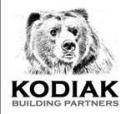Talk to LBM dealers about how their builder customers have evolved and you typically hear a wistful resignation in their reply. “Bless their hearts,” these dealers might say, “these briefcase builders don’t know the first thing about construction. Their buildings would fall in if it weren’t for us finding mistakes when we do take-offs. And most will browbeat us over price spikes rather than listen to suggestions on ways to save money.”
These builders’ inexperience with or inattention to the nuances of construction has turned dealers nationwide into ad hoc project managers and consultants, helping foster (modestly) profitable relationships. But what will happen if these builders learn to work in new ways—often in ways that won’t require your services? Your challenge between now and then will be to find new justifications for your existence.
I say “between now and then” because the speed of this shift will vary based on which types of builders you court. If you focus on multifamily and the biggest production builders, the changes already are noticeable. If you’re in a tiny town or cater only to custom builders, the shift may be glacially slow.
But make no mistake: Whenever a builder starts shopping at factories that do offsite construction, there’s less need for you to deliver sticks to a jobsite. Whenever a designer embraces building information modeling (BIM), there will be fewer mistakes for you to discover during a take-off. And whenever some tech hotshot discovers ways to make computers provide a service, your value fades. It’s a drip-drip-drip erosion of sales opportunities.
You could say this has been going on for decades, as specialty dealers focusing on roofing, gypsum, or insulation set up shop and siphoned off pro customers while the big-boxes lured away retail shoppers. Lumberyards typically responded by consolidating, cutting margins, and catering even more to small and custom builders. Profit margins held up, but the client base has typically shrunk.
Surveys suggest that builders of all sizes expect to increase their use of trusses, wall panels, and other manufactured components. If you don’t make them, you could end up selling fewer sticks on a project. Meanwhile, increasingly sophisticated e-commerce services are luring customers while you’re closed at night and simultaneously raising expectations of what your website can do. It’s easier than ever for a builder to figure out online what types of windows and doors are needed, order them with a click, and get them delivered straight from the factory.
Some consultants to tract, multifamily, and commercial builders are telling customers their future lies in vertical integration, much along the lines of how Apple has generated value with its in-house product designers, tight manufacturing processes, and custom-written software. The multifamily builder Katerra has similar aims; its designers don’t just envision buildings, they also create components that can be put on and taken off a truck more efficiently. Profit comes through control of the process, starting with the use of BIM design software that pretty much handles all of the take-off process except the pricing.
Other consultants want builders to utilize the “super sub”—outside companies that make components or modules off-site and then bring them to the builders’ job site for a framing-in process that can take hours rather than days. Entekra does this for tract homes, and other companies produce modular elements for hotels and single-family homes. These super subs aren’t owned by the builders, but the relationships are super tight. And BIM gets used here, too.
The challenge for LBM dealers with both these scenarios is this: Factories like those owned by Katerra and Entekra buy wood and windows and insulation by the railroad car and then can take the finished product to the job site by common carrier. If schlepping one home’s worth of sticks or double-panes to a building location is your reason for existence, these companies don’t need you.
Granted, the number of projects that Katerra and Entekra produce are just a drop in the total housing bucket today, but big LBM firms like Builders FirstSource and BMC can see the trend. They’re betting heavily on a super sub role by building lots of component manufacturing plants and promoting their custom millwork capabilities. It’s their way to avoid getting niched out of business.
I have been bringing up these challenges recently during my visits to dealers. It’s heartwarming to see that some leaders of these firms already have foreseen the problem and have begun reviewing options, like exploring the new opportunities for mass timber. Typically, those options will vary dramatically based on your company’s location, its strengths, its competition, and its finances.
Even if you have a healthy business selling to briefcase builders, don’t get complacent. Bless their hearts, even they are bound to change.



